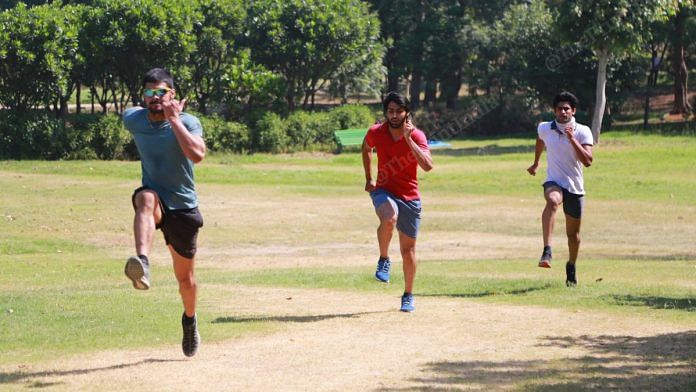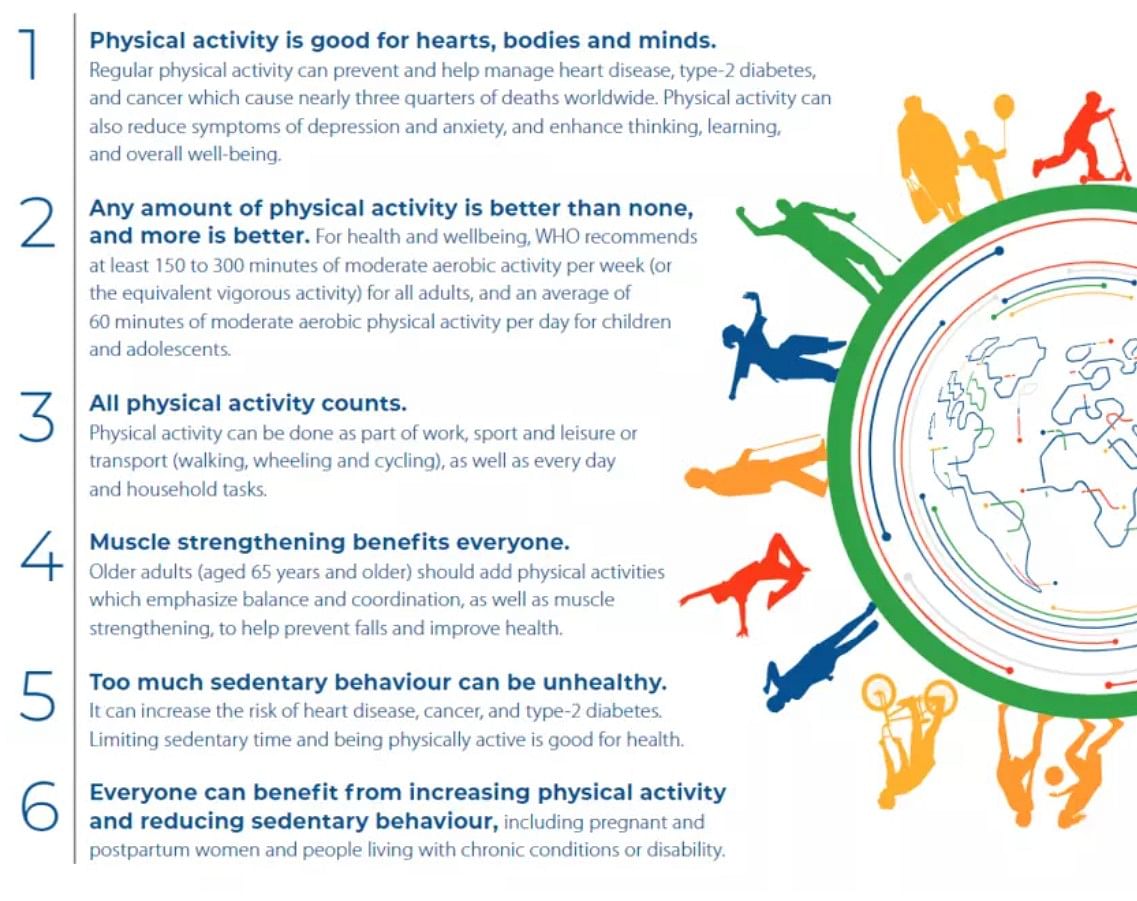
If you’re reading this from your sofa, the World Health Organization’s latest guidelines might make you rethink your position.
With people across the world spending more of their time at home than usual this year, the WHO reminds us that exercise has become even more important for physical and mental wellbeing.
According to the WHO, four to five million deaths per year could be averted if the global population was more physically active. Estimates indicate that 27.5% of adults and 81% of adolescents currently do not meet the 2010 WHO recommendations, with almost no improvements seen during the past decade.
There are also inequalities, with girls and women being less active than boys and men in most countries. And there are significant differences in levels of physical activity between higher and lower economic groups, and between countries and regions.
The WHO’s new guidelines on staying fit and healthy through physical activity are broken down by age group.
For the first time, recommendations also highlight the associations between sedentary behaviour and health risks, as well as providing guidelines for pregnant and postpartum women and people living with chronic conditions or disability.
Key takeaways
From reducing the amount of time we sit still, to including strengthening exercises, here are the main things to know from the WHO for everyone:

Children: aged 5 to 17
According to the latest guidelines, children aged between 5 and 17 should do at least 60 minutes of moderate-to-vigorous intensity physical activity per day. This includes aerobic activities as well as those that strengthen muscle and bone.
The benefits include improved physical fitness, cardiometabolic health (blood pressure, glucose and insulin resistance), bone health and better cognitive health, including academic performance and mental health.
The guidelines highlight the need to limit sedentary behaviour in children and adolescents, particularly around the amount of recreational screen time. High levels of inactivity are associated with poor fitness, lack of sleep and poorer cardiometabolic health.
Adults: aged 18 to 64
Adults between 18 and 64 years of age should do at least 3-5 hours of moderate-intensity aerobic activity or at least 75-150 minutes of vigorous intensity aerobic activity every week.
Muscle-strengthening exercises are also strongly recommended 2 or more days a week, as they can provide additional health benefits.
The guidelines note that sedentary behaviour in adults can cause an overall increased likeliness of death and incidence of cardiovascular disease, cancer and type-2 diabetes.
Recommendations for adults of 65 years old and over are the same as above, highlighting the importance for elderly people to keep fit.
Pregnant and postpartum women
Physical activity during and after pregnancy can have positive effects on mother and child. The WHO recommends pregnant/postpartum women do at least 3 hours of moderate-intensity physical activity a week, including general stretching and muscle-building exercises as well.
This can decrease the risk of pre-eclampsia, gestational hypertension and gestational diabetes, as well as decreasing the chance of delivery complications, postpartum depression and newborn complications or risk of stillbirth.
Adults living with chronic conditions
The WHO recommendations highlight the importance of physical activity for those living with chronic conditions such as hypertension, type-2 diabetes and HIV, as well as those who have survived cancer.
The weekly recommendation is the same as other adults of at least 3-5 hours of moderate-intensity aerobic activity or at least 1 hour and 15 – 3 hours of vigorous intensity aerobic activity every week.
Living with disability
Children with disabilities are recommended to spend at least 60 minutes a day doing moderate-to-vigorous intensity activity, the majority of which should be aerobic with muscle strengthening exercises incorporated.
Adults with disabilities should do 3-5 hours of moderate-intensity aerobic physical activity or 75-150 minutes of vigorous-intensity per week.
As well as the benefits outlined above, regular exercise can have additional positive effects on people with disabilities, including improved cognition, physical function, muscular strength and quality of life.
This article was published at World Economic Forum.
Subscribe to our channels on YouTube & Telegram
Why news media is in crisis & How you can fix it
India needs free, fair, non-hyphenated and questioning journalism even more as it faces multiple crises.
But the news media is in a crisis of its own. There have been brutal layoffs and pay-cuts. The best of journalism is shrinking, yielding to crude prime-time spectacle.
ThePrint has the finest young reporters, columnists and editors working for it. Sustaining journalism of this quality needs smart and thinking people like you to pay for it. Whether you live in India or overseas, you can do it here.